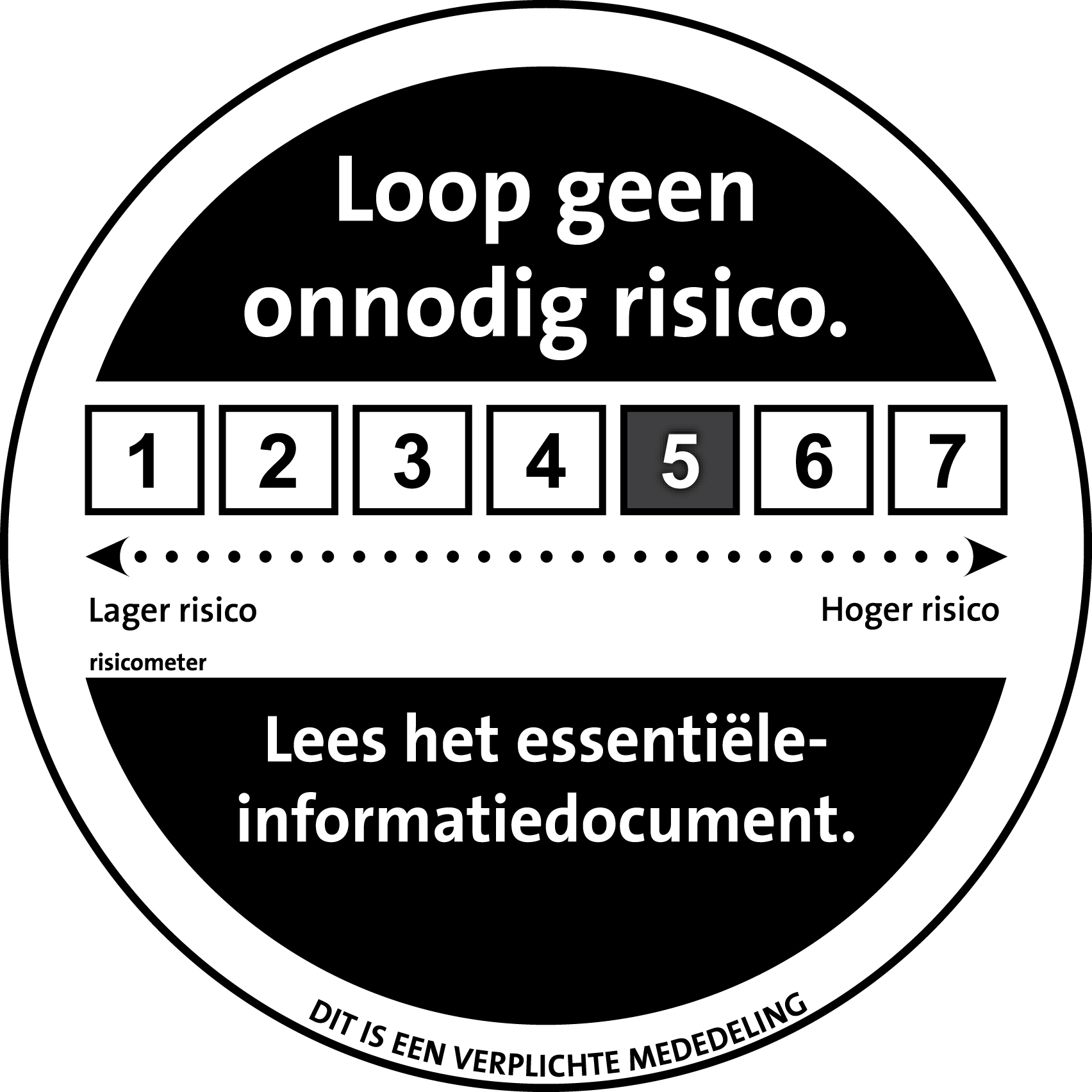Investment Opportunities in SMRs: The Future of Nuclear Power
20 November 2024
Read Time 8 MIN
Nuclear is a major component of the energy mix needed to satisfy growing electricity demand while the world transitions to cleaner energy sources. To see this trend play out in real time, look no further than the various announcements in recent months by tech companies to secure nuclear power sources. Nuclear can offer a long list of beneficial characteristics: its emissions levels are some of the lowest among energy sources, it can be very efficient and can produce consistent power throughout the day, and its land-use footprint can be small compared to other energy sources.
Historically, one hurdle for broader nuclear power adoption has been the slow development pace. The infrastructure required to build a large-scale nuclear reactor can be significant, and the regulatory approval process can often move at a snail’s pace. For this reason, industry, customers, and public officials have turned their attention to small modular reactors (SMRs). SMRs are expected to allow for more scalable and flexible installation of nuclear power that, once further developed, may reduce the time to market significantly, with many other potential benefits.
What Are Small Modular Reactors?
As their name implies, SMRs are small and modular. They are much smaller than large-scale traditional nuclear reactor facilities, in some cases as small as 1/10th the size of traditional nuclear reactors. Being modular allows them to be manufactured offsite and assembled on-site.
These features are important for several reasons. Their small scale may allow SMRs to be used in locations that could not otherwise support a large reactor. Also, SMRs can add additional capacity at existing nuclear power sites. The modular design allows reactors to be manufactured at scale and assembled on-site. This can significantly reduce the up-front capital costs associated with large reactor sites and significantly reduce construction times.
Safety is another attractive feature of SMR innovation. Traditional nuclear reactors rely on physical barriers between the radioactive reactor core and the environment, along with extensive protocols to monitor the reactor’s safety and serve as backup to address human and computer errors. Many SMRs are designed with passive, self-cooling features that don’t rely on operator intervention or computer action.
The elephant in the room when discussing SMRs is that they have long been in the design and innovation phase but have yet to be deployed in a meaningful way. The primary hurdle has been the cost associated with being first. Many plans have been canceled or reassessed as inflation and rising interest rates drove financing costs higher over the last several years. However, this could change in short order as nuclear has been more widely recognized as an important “green” or “sustainable” power source, and significant amounts of financing have been made available to this space in recent years. Several projects are targeting completion by 2029, but the early 2030s may be a more reasonable timeline.
Recent Big Tech Announcements
Many recent nuclear-related announcements by large tech firms such as Amazon have involved SMRs as an important component of their targeted nuclear power mix. As computing power related to generative AI and other technologies increases, the need for expanding data centers is driving the expected demand for electricity higher. Nuclear, with its potential for efficiency and clean footprint fits the bill as other power sources such as coal are dwindling and other renewable energy sources face adoption hurdles.
- Microsoft: While Microsoft made headlines in September 2024 by announcing an agreement with Constellation Energy to revive the Three Mile Island nuclear power plant, it has also been researching SMRs behind the scenes. In October 2023, the firm posted a job description for a nuclear technology expert who will be asked to “ensure technical feasibility and optimal integration of SMR and microreactor systems.”
- Alphabet (the parent company of Google): Announced on October 14, 2024, that it had agreed to purchase nuclear energy from SMRs being developed by Kairos Power and expects them to be up and running by 2030.
- Amazon: on October 16, 2024, Amazon announced an agreement with Energy Northwest, a consortium of Washington state public utilities, to enable the development of SMRs in Washington and is targeting the early 2030s.
- Amazon: On the same day, Amazon also announced a $500 million investment in X-energy, a leading developer of next-generation SMRs and fuel technology.
- Amazon: In addition to the aforementioned announcements, Amazon also disclosed an agreement with Dominion Energy to explore an SMR project near Dominion’s existing North Anna nuclear power plant, a major data center hub in Virgina.
Many of the innovative companies in the SMR space remain private. Early-stage and venture capital investment is often a leading indicator of investment opportunities, and major investors such as Bill Gates, Sam Altman, Peter Thiel, and Ken Griffin have backed various start-ups developing next-generation technologies in this space.
How to Invest in SMRs
While many names catching headlines such as TerraPower, X-energy, and Kairos Power are private companies, several high-profile companies have gone public in recent years offering pure-play exposure to SMRs.
Investors can also look for more diversified companies participating in the SMR space. Several defense and engineering companies are heavily investing in SMR technologies and the advanced fuel required to power these SMRs while also participating in other areas of the nuclear ecosystem, such as the construction and maintenance of existing early-generation power plants. Public utilities are also investing in this space as they look to scale up capacity at existing facilities.
Exchange-traded funds or ETFs can also a great way to access this investment opportunity while diversifying exposure among SMR participants. Some funds offer broad-based exposure to the entire nuclear ecosystem while also including meaningful exposure to this more nascent segment of the market.
Risk to Consider When Investing in SMRs
This area of the market is still in the early stages and there are somewhat limited options to invest in publicly. Of those pure-play SMR companies in the market, they are all susceptible to different commercial and regulatory paths to market, meaning that first mover advantage may reward the winner(s) of the race to build at scale.
Another risk to consider is the close association of SMRs with the artificial intelligence investment boom. While this association has fueled notable growth in the space, it certainly leaves SMR investments susceptible to market corrections and re-ratings as investors digest each company’s path forward and the segment’s position as a whole.
Diversification may be a prudent approach to mitigate the risk associated with single company exposure. The potential opportunity is robust, but a diversified, risk-aware approach may allow for a better risk-adjusted return experience over the long term.
SMR Companies to Watch
Please note that some of the companies listed below are included in the VanEck Uranium and Nuclear Technologies UCITS ETF. However, they represent only a fraction of the ETF's overall holdings and exposure. Several public companies that are relatively new to the market are making great progress toward making SMRs a reality:
- Nuscale Power Corp (SMR) (4.31% of NUCL assets*): NuScale’s path to public listing was via the SPAC merger process in May 2022. It has projects in Ohio, Pennsylvania, Quebec, Asia, and Europe, with notable attention paid to its efforts in Romania.
- Oklo Inc (OKLO) (4.83% of NUCL assets*): Oklo also used the SPAC process to go public in May 2024. It is developing small scale SMRs that can utilize recycled uranium. It is targeting 2026 to break ground at their first site in Idaho and is aggressively hoping to have the reactor up and running by 2027, pending regulatory hurdles.
Other long-standing public companies are heavily involved in the SMR ecosystem:
- BWX Technologies Inc (BWXT) (9.02% of NUCL assets*): BWX traces its history to the 1800s and was involved in the Manhattan Project of the 1940s, among many other notable associations and accomplishments. It is involved in a range of nuclear and defense-related areas and has been heavily involved in commercial SMR design since 2009. It is also at the forefront of nuclear fuel innovation.
- Kepco Engineering and Construction Company A Korean company, Kepco is a diversified business that focuses on nuclear, thermal, and other clean power sources. It has been developing an offshore small modular reactor for years with the hopes of deploying as early as 2031.
Within the private markets, several companies (among many others) are making significant progress and doing very exciting things in the SMR space and are worth watching in the event they eventually decide to tap the public markets:
- TerraPower: Backed by Bill Gates, TerraPower is currently developing its first advanced reactor in Wyoming near the site of a retiring coal plant. It hopes the Wyoming proof of concept will be scaled broadly in the future.
- X-energy: After announcing a plan to go public in 2022, the firm reversed course scrapping its SPAC merger arrangement in light of market conditions in late 2023. X-energy designs SMRs and manufactures a proprietary version of TRISO advanced fuel.
- Kairos Power: Kairos caught headlines from its Google announcement in October 2024 and is currently working toward SMR development in Tennessee.
Invest in SMR Technology and the Entire Nuclear Ecosystem
The VanEck Uranium and Nuclear UCITS ETF can offer investors comprehensive exposure to the nuclear energy ecosystem. In addition to uranium miners, the strategy targets nuclear energy producers, companies involved in the construction, engineering, and maintenance of nuclear projects, and companies providing equipment, technology, and/or services to the nuclear power industry, with exposure to innovative SMR companies.

Main Risk Factors of a Nuclear ETF
Industry or Sector Concentration Risk: The Fund’s assets may be concentrated in one or more particular sectors or industries. The Fund may be subject to the risk that economic, political or other conditions that have a negative effect on the relevant sectors or industries will negatively impact the Fund's performance to a greater extent than if the Fund’s assets were invested in a wider variety of sectors or industries.
Liquidity Risks: Exists when a particular financial instrument is difficult to purchase or sell. If the relevant market is illiquid, it may not be possible to initiate a transaction or liquidate a position at an advantageous or reasonable price, or at all.
Risk of Investing in Natural Resources Companies: Investments in natural resources and natural resources companies, which include companies engaged in alternatives (e.g., water and alternative energy), base and industrial metals, energy and precious metals, are very dependent on the demand for, and supply and price of, natural resources and can be significantly affected by events relating to these industries, including international political and economic developments, embargoes, tariffs, inflation, weather and natural disasters, limits on exploration, often changes in the supply and demand for natural resources and other factors.
For more information on risks, please see the “Risk Factors” section of the relevant Fund’s prospectus, available on www.vaneck.com.
To receive more ETF Insights, sign up to our Newsletter.
* NUCL holdings above are stated as of 01/11/2024.
IMPORTANT INFORMATION
This is a marketing communication. Please refer to the prospectus of the UCITS and to the KID before making any final investment decisions. This information originates from VanEck (Europe) GmbH, which has been appointed as distributor of VanEck products in Europe by the Management Company VanEck Asset Management B.V., incorporated under Dutch law and registered with the Dutch Authority for the Financial Markets (AFM). VanEck (Europe) GmbH with registered address at Kreuznacher Str. 30, 60486 Frankfurt, Germany, is a financial services provider regulated by the Federal Financial Supervisory Authority in Germany (BaFin).
The information is intended only to provide general and preliminary information to investors and shall not be construed as investment, legal or tax advice VanEck (Europe) GmbH and its associated and affiliated companies (together “VanEck”) assume no liability with regards to any investment, divestment or retention decision taken by the investor on the basis of this information. The views and opinions expressed are those of the author(s) but not necessarily those of VanEck. Opinions are current as of the publication date and are subject to change with market conditions. Certain statements contained herein may constitute projections, forecasts and other forward-looking statements, which do not reflect actual results. Information provided by third party sources is believed to be reliable and have not been independently verified for accuracy or completeness and cannot be guaranteed. Brokerage or transaction fees may apply.
VanEck Asset Management B.V., the management company of VanEck Uranium and Nuclear Technologies UCITS ETF (the "ETF"), a sub-fund of VanEck UCITS ETFs plc, is a UCITS management company incorporated under Dutch law registered with the Dutch Authority for the Financial Markets (AFM). The ETF is registered with the Central Bank, passively managed and tracks an equity index. Investing in the ETF should be interpreted as acquiring shares of the ETF and not the underlying assets.
Investors must read the sales prospectus and key investor information before investing in a fund. These are available in English and the KIIDs/KIDs in certain other languages as applicable and can be obtained free of charge at www.vaneck.com, from the Management Company or from the following local information agents:
Austria - Facility Agent: Erste Bank der oesterreichischen Sparkassen AG
Germany - Facility Agent: VanEck (Europe) GmbH
Spain - Facility Agent: VanEck (Europe) GmbH
Sweden - Paying Agent: Skandinaviska Enskilda Banken AB (publ)
France - Facility Agent: VanEck (Europe) GmbH
Portugal - Paying Agent: BEST – Banco Eletrónico de Serviço Total, S.A.
Luxembourg - Facility Agent: VanEck (Europe) GmbH
All performance information is based on historical data and does not predict future returns. Investing is subject to risk, including the possible loss of principal.
No part of this material may be reproduced in any form, or referred to in any other publication, without express written permission of VanEck.
© VanEck (Europe) GmbH
Important Disclosure
This is a marketing communication. Please refer to the prospectus of the UCITS and to the KID before making any final investment decisions.
This information originates from VanEck (Europe) GmbH, which has been appointed as distributor of VanEck products in Europe by the Management Company VanEck Asset Management B.V., incorporated under Dutch law and registered with the Dutch Authority for the Financial Markets (AFM). VanEck (Europe) GmbH with registered address at Kreuznacher Str. 30, 60486 Frankfurt, Germany, is a financial services provider regulated by the Federal Financial Supervisory Authority in Germany (BaFin).
The information is intended only to provide general and preliminary information to investors and shall not be construed as investment, legal or tax advice VanEck (Europe) GmbH, VanEck Switzerland AG, VanEck Securities UK Limited and their associated and affiliated companies (together “VanEck”) assume no liability with regards to any investment, divestment or retention decision taken by the investor on the basis of this information. The views and opinions expressed are those of the author(s) but not necessarily those of VanEck. Opinions are current as of the publication date and are subject to change with market conditions. Certain statements contained herein may constitute projections, forecasts and other forward-looking statements, which do not reflect actual results. Information provided by third party sources is believed to be reliable and have not been independently verified for accuracy or completeness and cannot be guaranteed. Brokerage or transaction fees may apply.
All performance information is based on historical data and does not predict future returns. Investing is subject to risk, including the possible loss of principal.
No part of this material may be reproduced in any form, or referred to in any other publication, without express written permission of VanEck.
© VanEck (Europe) GmbH / VanEck Asset Management B.V.
Sign-up for our ETF newsletter
Related Insights
12 March 2025
07 March 2025
12 February 2025
07 February 2025
16 January 2025




